Norquist calls for ‘no more malls’

John Norquist shares his vision of New Urbanism with the Granville/Brown Deer Chamber of Commerce. Photo by Patti Wenzel
John Norquist is well known for his dislike of sprawl – ending it was one of his platforms as Milwaukee’s mayor for 16 years. During that time, he worked hard to remove the Park East Freeway and open it up to at-grade development and even floated the idea of knocking down I-794 for the same reason. He opposed the addition of freeway lanes within the city and county limits and sought to create more walkable neighborhoods.
He even wrote a book in 1998 about his passion for more urbane cities, The Wealth of Cities: Revitalizing the Centers of American Life.
Since leaving office in 2003, Norquist has led the Congress for the New Urbanism, an organization that promotes walkable, mixed-use neighborhood development, sustainable communities and healthier living conditions around the world.
Norquist came back to Milwaukee Tuesday as the keynote speaker for the Granville/Brown Deer Chamber of Commerce Third Annual Vision Series. He brought his message of new urbanism and walkable neighborhoods to one of the most sprawled out regions of Milwaukee County.
The far northwest corner of the City of Milwaukee is a grid of six-lane roads – Brown Deer, Good Hope, Mill and 76th Street – and is home to one of the city’s largest wastelands of parking lots and unused land – the former Northridge Mall and surrounding commercial district. The Village of Brown Deer has some of those same streets, but its problem is more image than vast empty parking lots.
Norquist said even though all those streets and parking lots are in place, they can be fixed to make Northwest Milwaukee and Brown Deer attractive to investment, employers, employees and residents. He said it will require a change in perspective, zoning, planning and a lot of patience.
“This didn’t happen overnight and it won’t change overnight,” Norquist said. “But it can change.”
The New Urbanist ideal
Norquist’s ideal urban neighborhood already exists in Milwaukee. He points to South Kinnickinnic Avenue, Brady Street and the revitalized Third Ward.
These neighborhoods all have 50 foot wide streets with sidewalks on both sides with businesses and homes flush with the property line. Norquist praised the urban engineers of old for recognizing this perfect plan for success.
“They knew this was the standard commerical street. A street that sells stuff, a street that allows for socializing and a street that carries traffic.”
He described the roadways in Northwest Milwaukee and other suburban areas as “designed with only traffic in mind.” Instead, roads need to be retrofitted to be more like Kinnickinnic or Brady, where people live, work, shop, eat and travel.
The roadblocks to this type of street and neighborhood design are substantial. Norquist said even he was unaware of the zoning codes that were creating the giant parking lots and set back stores that contribute to sprawl.
“On National Avenue, a businessman put in a laundromat. He built this large parking lot and set the store back from the street. When I asked him why the hell he did that, he told me he was simply following the city’s rules,” Norquist said.
He added that the city had a zoning ordinance requiring setbacks and front of store parking on new retail and service construction.
“I quickly got that changed,” he concluded. He then urged city and village officials to take a look at their ordinances and codes to determine if they are standing in the way of pedestrian and economic development.
Another road block to creating an urban neighborhoods is the federal government, specifically Fannie Mae, Freddie Mac and HUD financing rules. Norquist used Brady Street and one of its iconic restaurants, Mimma’s Cafe, as an example.
The restaurant takes up the first floor of an early Milwaukee building, while owner Mimma Megna lives on the second floor. This was a common occurrence in many Milwaukee neighborhoods and can still be found in small towns across the country. However Fannie, Freddie and HUD will not guarantee housing loans for residences in areas where more than 20 percent of the properties are retail or commercial, exactly like the buildings on Brady Street.
Good congestion?
Norquist said these roadblocks are keeping Milwaukee and its suburbs from being “congested” in a good way.
“When you concentrate people and markets together it increasing the market value, the residential value,” he said. “Think of Paris. It is highly congested and everybody wants to be there. The value of a street is not about how much capacity it has to move traffic, it is how much human and market congestion it can create and how much money.”
For those of us who grew up in suburbia in the 1980s, the idea of no more malls may be clouded by the fond memories of our teenage years. But Norquist pleaded with community leaders to not resurrect Northridge Mall as the sole commercial answer to the area’s problems.
“Look at Bayshore. They really did a good job there,” he said. “Look for communities.Try to break things into smaller blocks. Look to emulate villages like Cedarburg. It’s been there for over 100 years and its not going out of business anytime soon.”
Instead, communities should focus on low-volume streets, boulevards and avenues; townhouses; multi-use commerical/residential buildings and public transit, Norquist said.
“Look at Detroit, an example of this modern architecture,” Norquist said. “They took Woodward Avenue away and replaced it with freeways and large, traffic-oriented roads. This was the city that produced more value than any other city during World War II, but now 35 percent of the buildings from that era are gone and the city is no longer congested. It looks like we actually lost the war.”
Norquist finished his presentation by telling community leaders to be bold and brave and to embrace urbanism.
“You can make your communities a special place. You can make it a destination and home.”

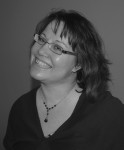


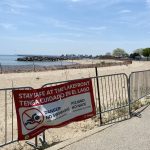

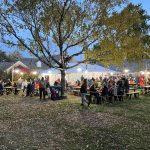
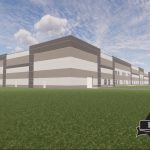
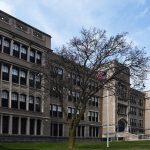










I heard the prescient Mayor Norquist speak a week ago and am thoroughly proud of having lived in a city where he was mayor. Go John!!!!
Mandel Group is a great example of how to develop living spaces that interact with the neighborhood….
I spoke to a friend last night who calls suburban-style fringelands “taint” – tain’t city, tain’t country. I think of them as a ghastly horrorscape where you can’t do ANYTHING without driving and the streets either go nowhere at all or are the paved equivalent of a log flume.
Love this article… love Mr. Norquist’s points… agree wholeheartedly…
[…] By Patti Wenzel Third Coast Digest […]
[…] a resurgent Milwaukee urbanism (which has been encouraged by leaders such as former Mayor John Norquist) and an increased demand for living in a dense urban setting is thoroughly transforming “The […]